AI Predicts Seasonal Travel & Hotel Booking Demand
Seasonal travel trends have always posed major challenges for the hospitality and tourism industry. During peak seasons, demand surges can overwhelm capacity, while off-peak periods often lead to low occupancy and revenue drops. Artificial intelligence (AI) is now offering a breakthrough solution: predicting seasonal travel and hotel booking demand. By analyzing big data from booking histories, search trends, local events, and socio-economic factors, AI can deliver highly accurate forecasts for each season. This empowers hotels and travel businesses to optimize pricing, manage resources, and design effective marketing strategies—benefiting both service providers and travelers alike.
Do you want to learn how AI predicts seasonal booking demand? Let's explore the details with INVIAI in this article!
Seasonal booking demand in travel and hospitality often follows familiar cycles (summer holidays, winter holidays, events), but real-world factors can make it unpredictable. Modern AI tools analyze huge datasets to forecast these shifts with remarkable precision.
Airlines now use predictive AI to forecast which routes will see the most traffic, even before bookings begin, allowing carriers to adjust fares ahead of peak travel.
— Industry Aviation Analysis
Similarly, hospitality experts note that AI-driven models let hotels "anticipate occupancy rates with high accuracy" by factoring in seasonality, events and weather patterns.
The UN World Tourism Organization even urges agencies to apply AI to customer data and "predict travel trends" in this strategic way.
Seasonal Demand Patterns in Travel & Hospitality
Travel demand naturally ebbs and flows with the calendar: summer vacations, winter holidays, and festival seasons all bring surges. But exact peak timing can vary year to year, creating forecasting challenges.
AI helps by de-seasonalizing data and learning from each cycle. In one breakthrough case, Northwestern researchers used machine learning on hotel bookings, airline passenger data and holiday calendars and saw forecast errors drop by over 50% compared to a basic model.
AI Learning Advantage
Learn complex seasonal trends and update them as conditions change
- Adaptive pattern recognition
- Real-time condition updates
- 50%+ accuracy improvement
Traditional vs AI Forecasting
Far superior view of when demand will actually rise
- Beyond simple trendlines
- Multi-factor analysis
- Predictive accuracy
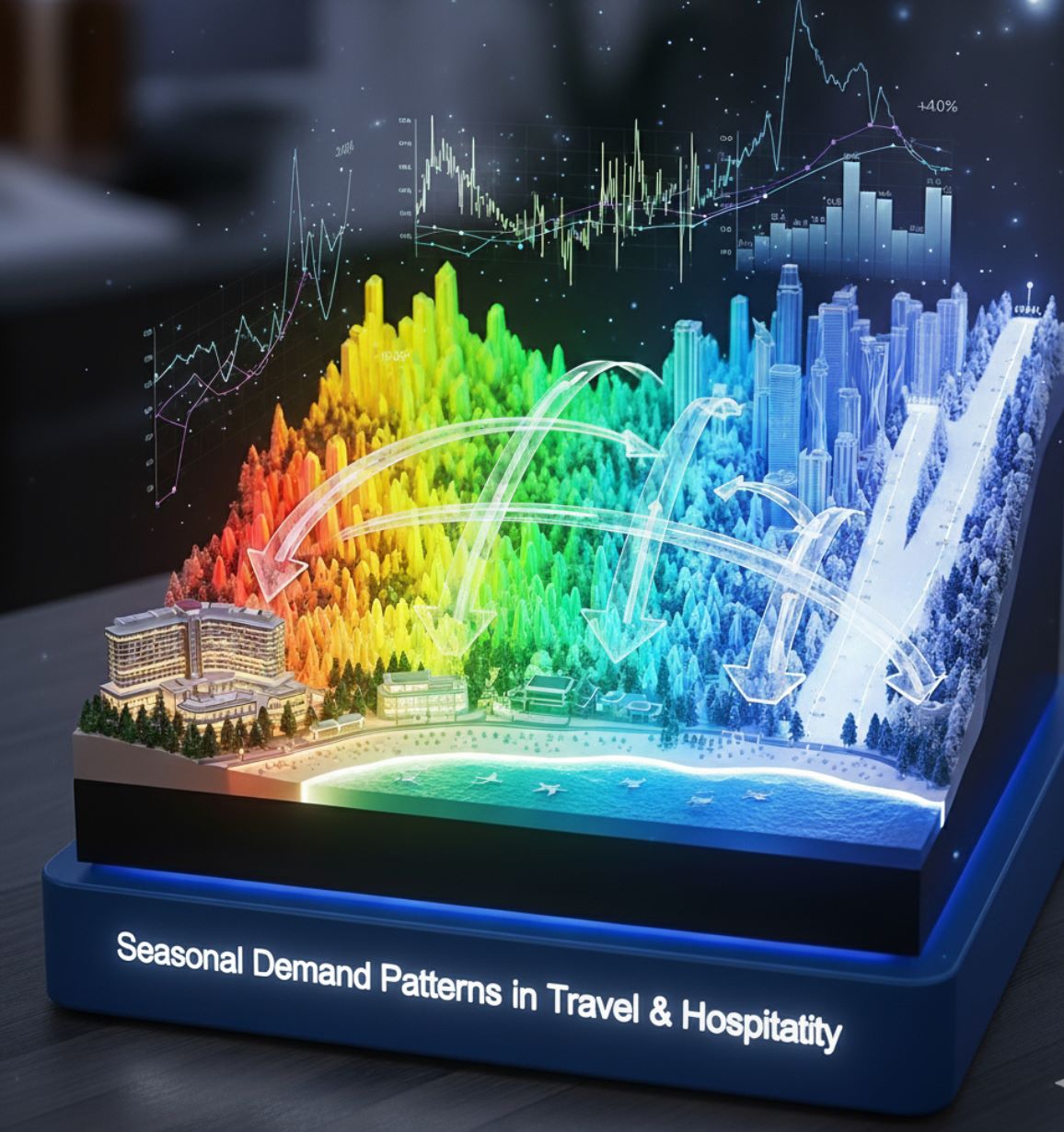
How AI Forecasts Seasonal Demand
AI forecasting systems ingest a wide range of data and use advanced models to spot demand signals with unprecedented accuracy. The system processes multiple data streams simultaneously:
Historical & Booking Data
Search & Browsing Patterns
Social & Market Signals
External Events & Weather
AI can weight trending topics on social networks, web visit data, customer reviews… macroeconomic data to detect subtle seasonal patterns.
— Slimstock Research Analysis
Advanced Machine Learning Models
These inputs go into sophisticated machine-learning models (like Random Forests or neural networks) and time-series algorithms. Unlike simple trendlines, AI "can detect complex and non-linear relationships" in the data, uncovering patterns a human might miss.
Linear Forecasting
- Simple trendlines
- Historical data only
- Manual adjustments
- Static predictions
Machine Learning
- Complex pattern recognition
- Multi-source data integration
- Self-optimizing systems
- Real-time adaptability
The models continuously improve: as Slimstock points out, AI systems can "self-optimise" when fed new data, producing ever-more accurate forecasts over time. In practice this means forecasts stay accurate even as market conditions shift (for example, quickly absorbing the effect of a sudden event or disruption).
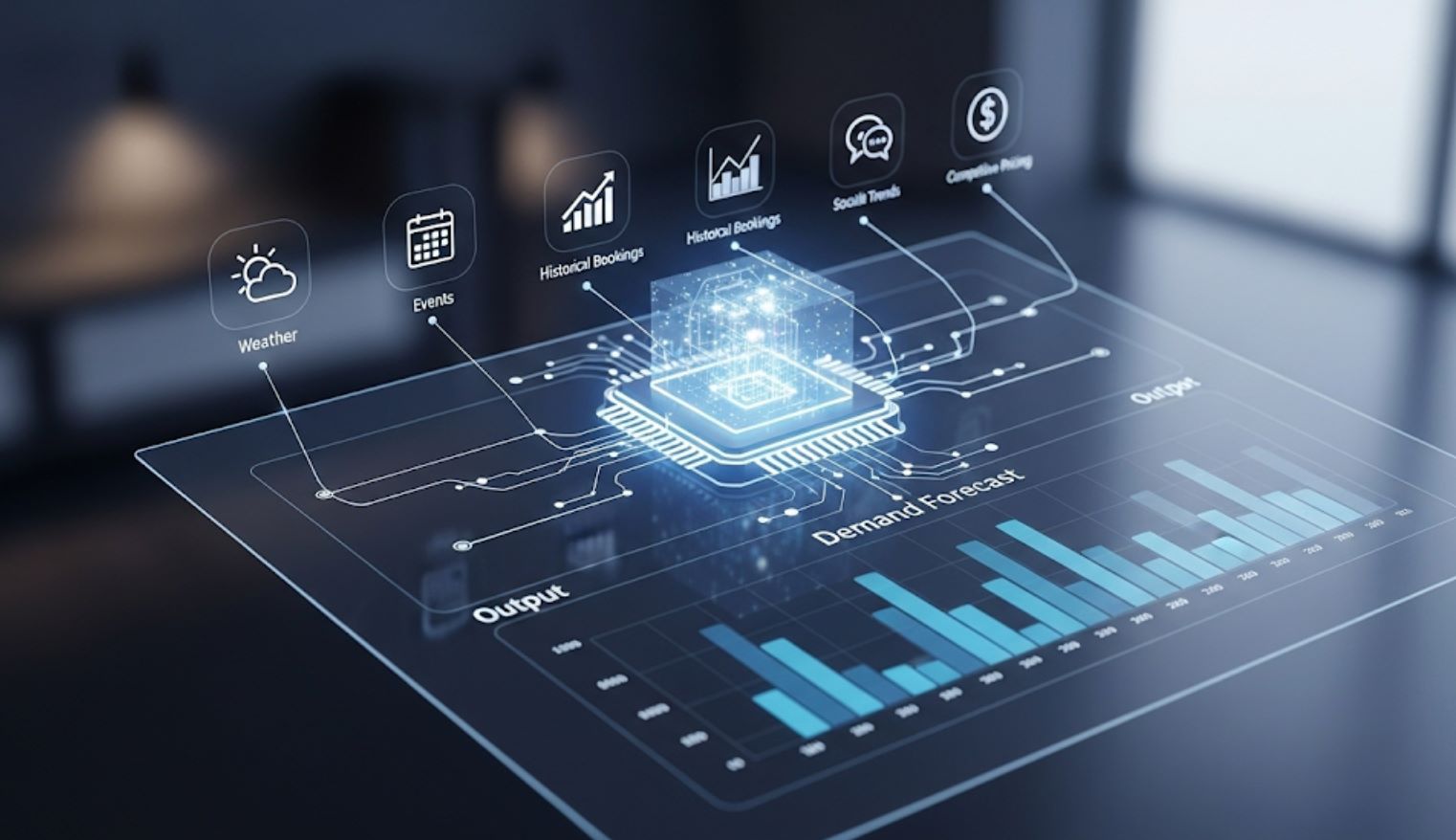
Real-World Use Cases
AI-driven seasonal forecasting is already transforming travel and hotel operations across multiple sectors:
Airlines & Flight Operations
Carriers forecast high-demand routes and adjust pricing or capacity in advance. Airlines analyze search data and seasonal trends to predict which destinations will be popular.
- Dynamic pricing implementation (raising or lowering fares in real-time based on peak/non-peak demand)
- Route capacity optimization before demand spikes
- Early marketing of high-potential routes
- Proactive inventory management
Hotels & Accommodation
Hotels use AI to forecast room occupancy by analyzing historical bookings, local events and weather patterns. AI "helps forecast booking demand" so hotels can launch targeted promotions or adjust rates before low-occupancy dips.
- Fewer empty rooms through predictive vacancy filling
- Special offers launched before anticipated low-demand periods
- Rate increases timed perfectly with peak arrival
- Revenue maximization without deep discounting
Online Travel Agencies & Tour Operators
Predictive AI spots early signs of trending destinations or shifts in traveler preferences. Agencies can then assemble and market travel packages before competitors.
Trend Detection
AI detects rising interest in adventure travel or specific cities
Package Curation
Tour operators proactively curate relevant deals
Market Leadership
Launch promotions before competitors recognize the trend
Destination Marketing
Tourism boards monitor search and social trends to gauge interest in sights or regions. AI enables them to run campaigns and events before the tourism wave hits, rather than playing catch-up when the peak has passed.
- Proactive campaign timing based on interest signals
- Event planning aligned with predicted visitor surges
- Resource allocation before peak tourism periods
- Strategic marketing investment optimization
In short, travel businesses across the board are using AI to predict when and where demand will spike, not just react after bookings rise.
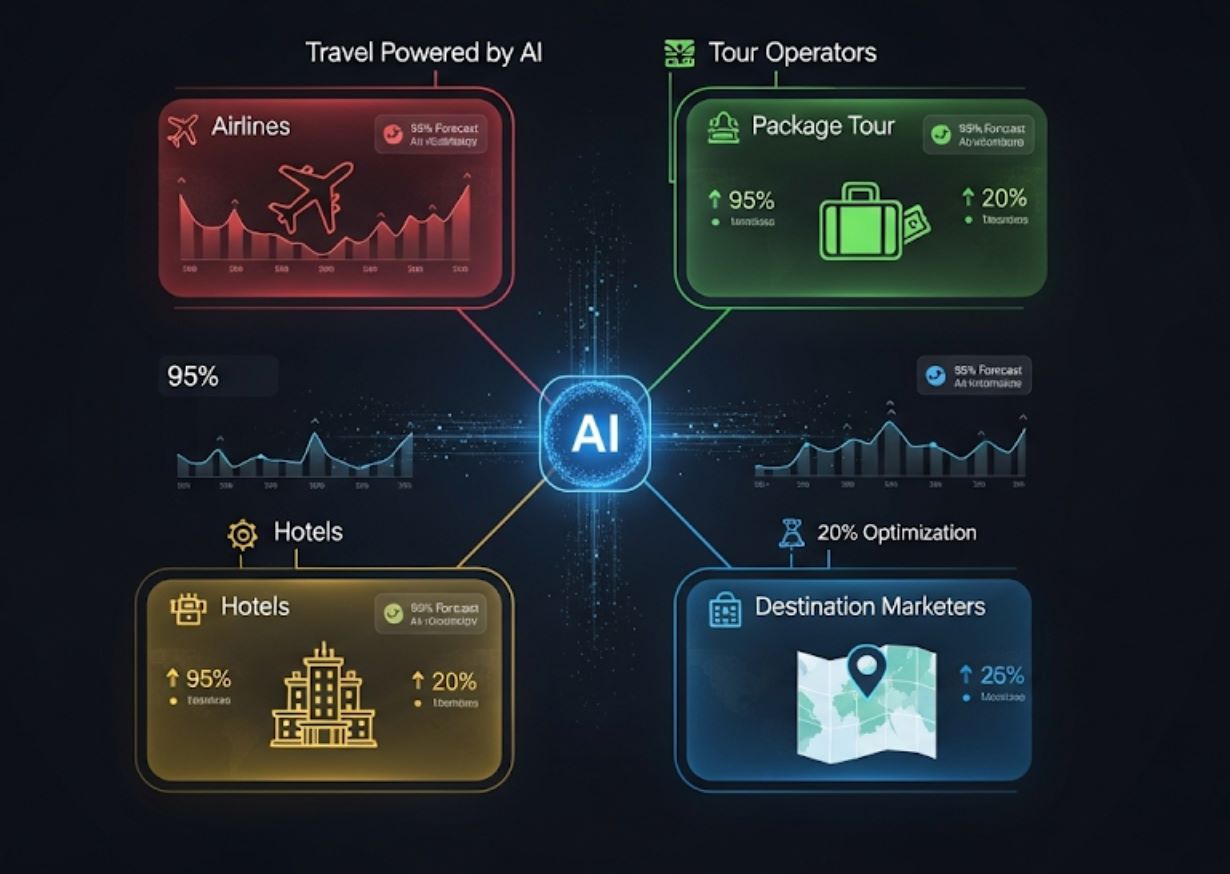
Benefits of AI Forecasting
Using AI for seasonal demand brings several transformative advantages that directly impact business performance:
Higher Forecast Accuracy
By analyzing far more data than traditional methods, AI produces much more precise predictions
- 50% error reduction vs basic models
- Complex pattern recognition
- Multi-source data integration
Revenue & Profitability
Anticipating busy periods means capturing revenue that would otherwise slip away
- Up to 10% revenue uplift
- Optimized peak pricing
- Reduced revenue leakage
Operational Efficiency
AI automates complex number-crunching and eliminates manual spreadsheet forecasting
- Self-optimizing models
- Automated predictions
- Staff focus on strategy
Strategic Agility
Plan campaigns, staffing and inventory ahead of time with confidence
- Proactive resource planning
- Reduced stockouts
- Optimized staffing levels
AI can incorporate diverse data (social trends, weather, etc.) to spot complex and less obvious patterns.
— Slimstock Analysis
Overall, AI-enabled forecasting translates into smoother operations and stronger revenue for travel and hotel businesses, especially during critical peak and shoulder seasons.
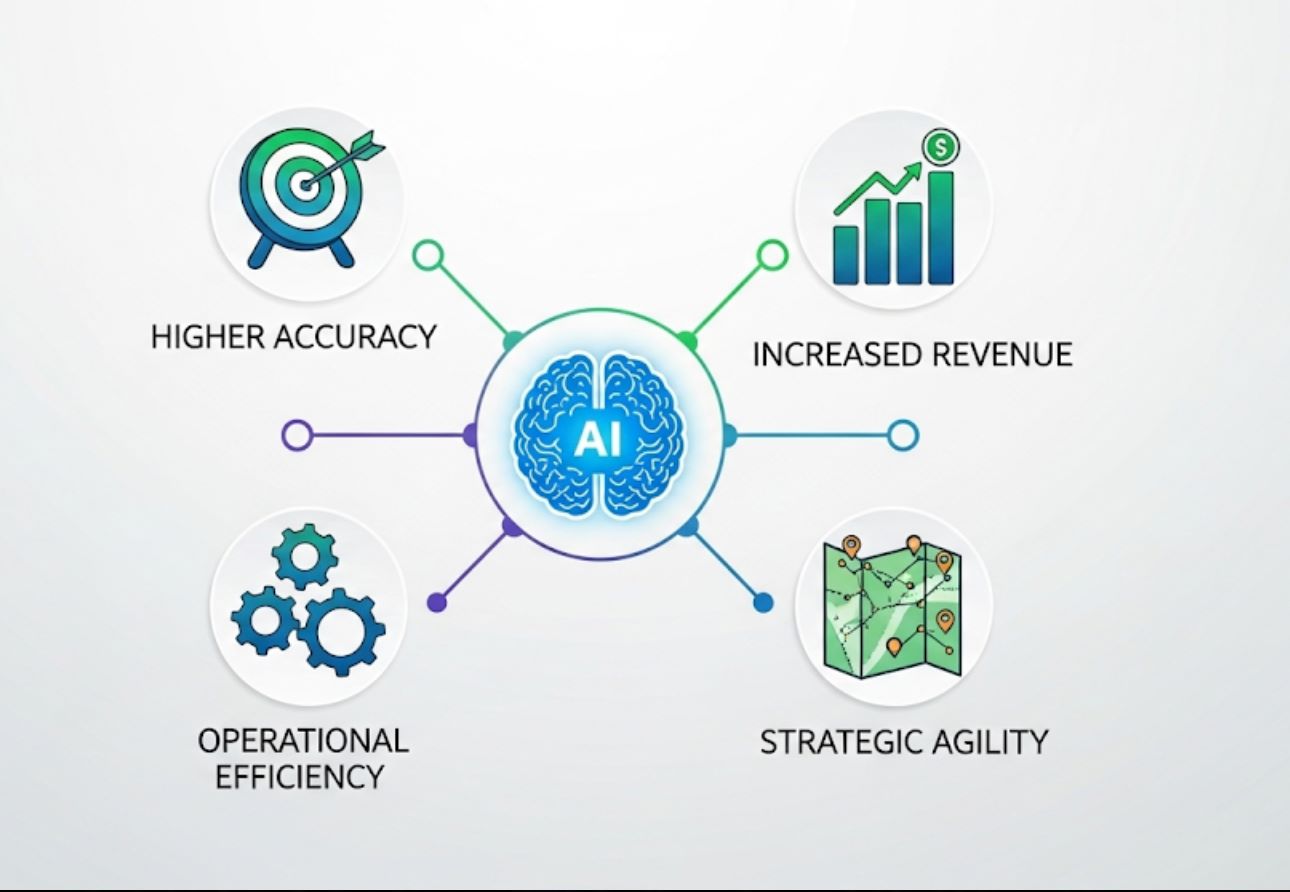
Implementation Considerations
Adopting AI forecasting involves careful planning and data management. Success requires addressing several critical factors:
Quality Data & Integration
AI models are only as good as their data. Forecasts require clean, timely data from all relevant sources (CRMs, booking engines, market feeds). Incomplete or stale data leads to poor predictions.
- Integrate CRM, booking engines, and market feeds
- Ensure data quality and timeliness
- Establish continuous data pipeline updates
- Validate data accuracy regularly
Talent & Strategy
WTTC cautions that many travel businesses lack AI expertise and formal plans. It's crucial to invest in skilled data analysts or partner with AI-savvy providers.
Start Small
Begin with a pilot (single route, property or season)
Demonstrate Value
Prove ROI with measurable results
Scale Up
Train staff to interpret AI forecasts
Privacy and Ethics
Collecting more traveler data raises privacy considerations. Follow local regulations (GDPR, CCPA, etc.) and be transparent with customers. Responsible use of AI builds trust.
- Comply with GDPR, CCPA and local regulations
- Maintain transparency with customers
- Implement responsible AI practices
- Build customer trust through ethical data use
Continuous Refinement
Even after deployment, keep improving the model. As AI advisors point out, feed new booking outcomes and market feedback back into the system.
Regular Retraining
Human Oversight
By addressing these factors systematically, travel and hotel companies can successfully leverage AI forecasting to navigate seasonal demand with confidence and precision.
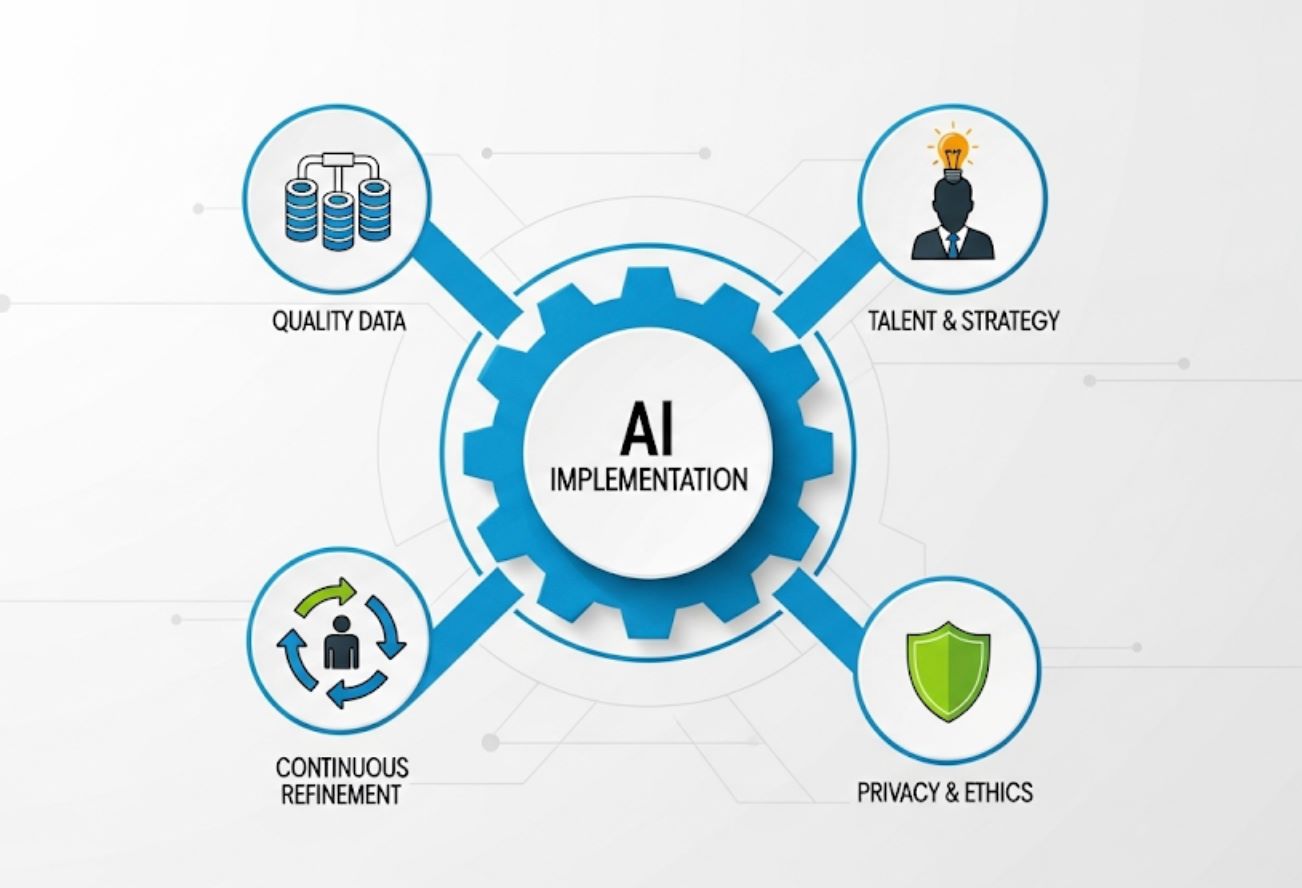
The Future of AI-Powered Travel Forecasting
AI-powered forecasting is proving to be a game-changer for travel and hospitality. By learning from both historical patterns and real-time signals, AI can confidently predict future demand patterns and guide strategic decisions with unprecedented accuracy.
Industry leaders are clear: integrating AI into demand forecasting is no longer optional. It is a strategic priority that yields better customer service, higher occupancy and increased revenues during every season.
Embracing AI in travel will deliver unparalleled customer experiences and a more resilient, sustainable tourism sector.
— World Travel & Tourism Council (WTTC)



